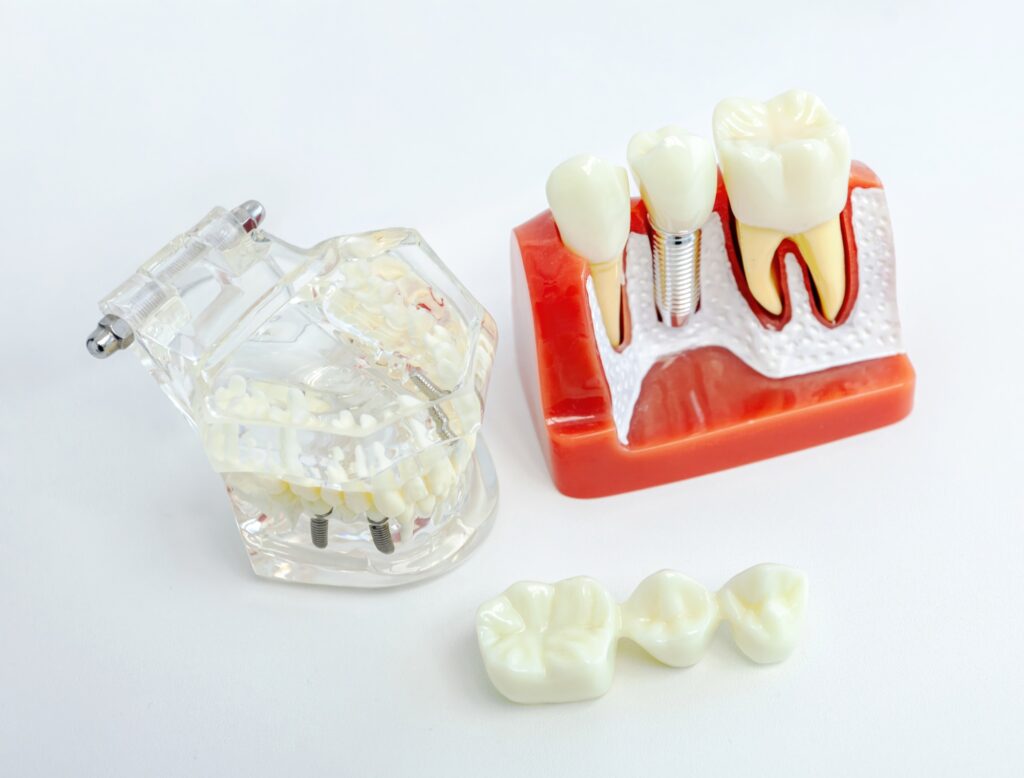We accept the Canadian Dental Care Plan (CDCP) |Learn More
We accept the Canadian Dental Care Plan (CDCP) |Learn More
Gum graft surgery is a highly effective procedure used to treat gum recession, where your gums pull away from your teeth, exposing the tooth roots. This common issue can increase your risk of tooth decay, sensitivity, and bone loss. Gum grafting helps cover exposed roots, restore your gum line, and improve your overall oral health. The recovery period typically takes one to two weeks, although it may take longer for full healing.

A gum graft is a surgical procedure designed to replace lost gum tissue caused by gum recession. It involves taking healthy tissue from another part of your mouth and attaching it to the areas of recession to restore your gum line. In some cases, synthetic or donated tissue may be used.
Your dentist may recommend gum grafting if you have gum recession, which is often a result of gum disease, genetic factors, or aggressive brushing. Receding gums expose your teeth roots, which can lead to sensitivity, cavities, and even tooth loss. Gum grafting helps restore the tissue, reduces the risk of further gum disease, and enhances the appearance of your smile.
If your dentist believes gum graft surgery is necessary, you will be referred to a periodontist—a specialist in gum care. The procedure typically involves the following steps:
The duration of the surgery depends on the number of areas being treated. A single graft typically takes around one hour, while multiple grafts may take longer.
While you won’t feel any pain during the procedure, you may experience mild discomfort, swelling, and bruising afterward. Your periodontist will prescribe pain medications and provide detailed aftercare instructions to minimize discomfort and promote healing.
Gum graft surgery offers numerous advantages:
Though gum graft surgery is generally safe, some risks exist, including:
If you experience any of the following after your gum graft surgery, contact us immediately:
With a high success rate of over 90%, gum graft surgery is an effective solution for treating gum recession. It provides long-term benefits for your oral health by preventing further damage, reducing sensitivity, and enhancing the appearance of your smile. If left untreated, gum recession can lead to more severe oral health issues, such as tooth mobility and eventual tooth loss.
At Oxford Family Dental, our team of experienced periodontists is dedicated to helping you achieve a healthier smile. If you’re experiencing gum recession or have concerns about your oral health, contact us to schedule a consultation. We’ll help determine if gum graft surgery is the right solution for you.
Submit this form or give us a call to schedule a new patient appointment for your child or other family member.
We are accepting New Patients. Our office is open Monday to Saturdays. Please call our office for details.
Monday: 9am – 7pm
Tuesday: 8am – 5pm
Wednesday: 8am – 6pm
Thursday: 9am – 6pm
Friday: 8am – 5pm
Saturday: 8am – 4pm
Sunday: Closed